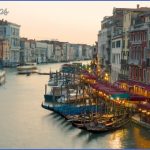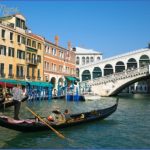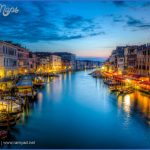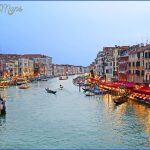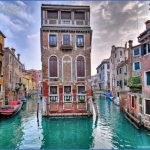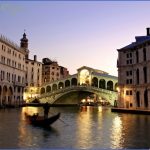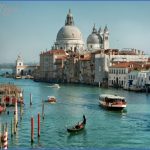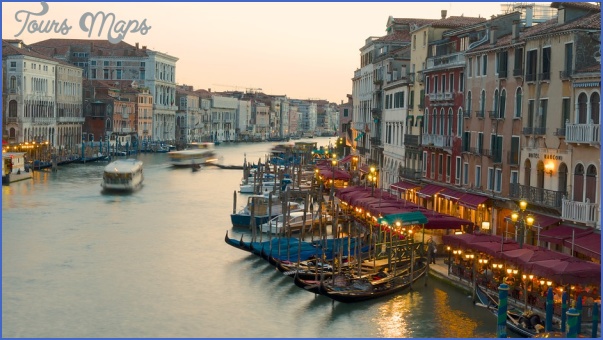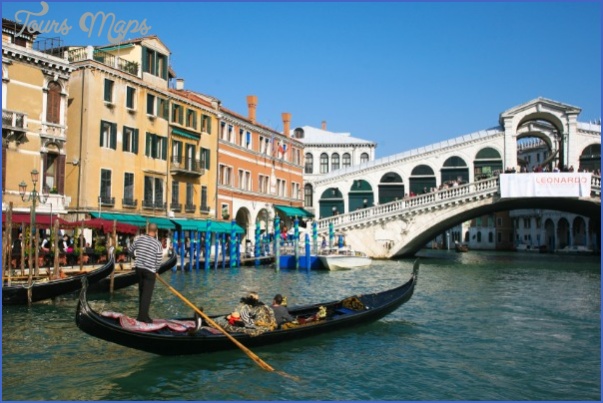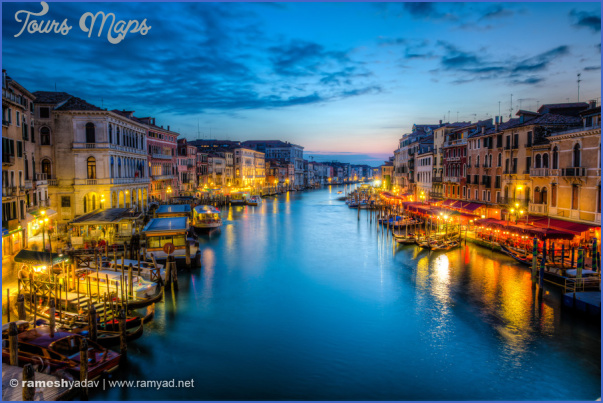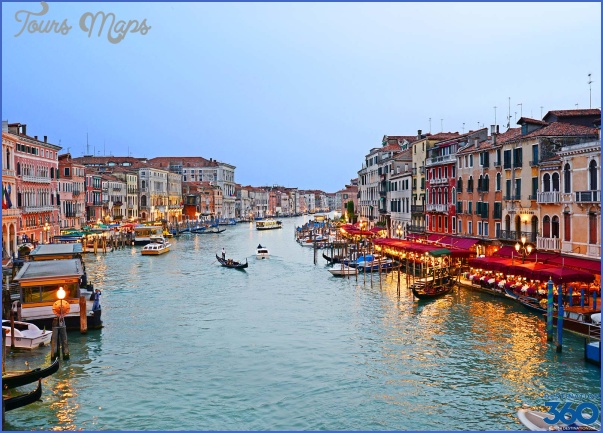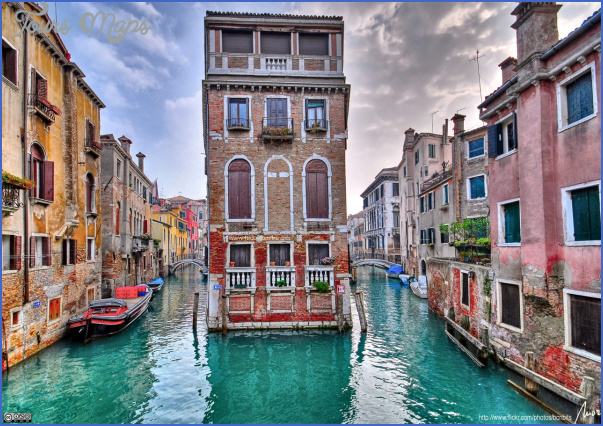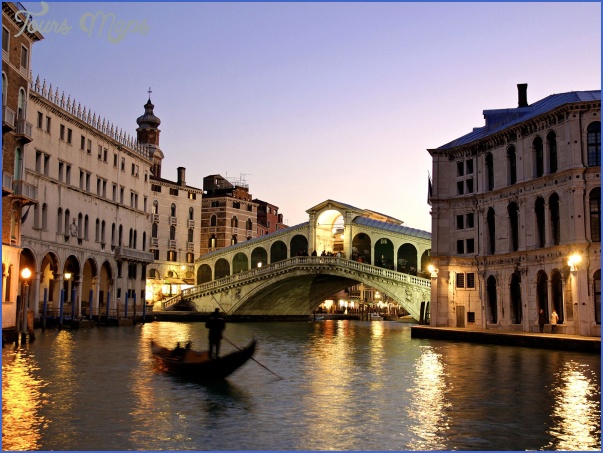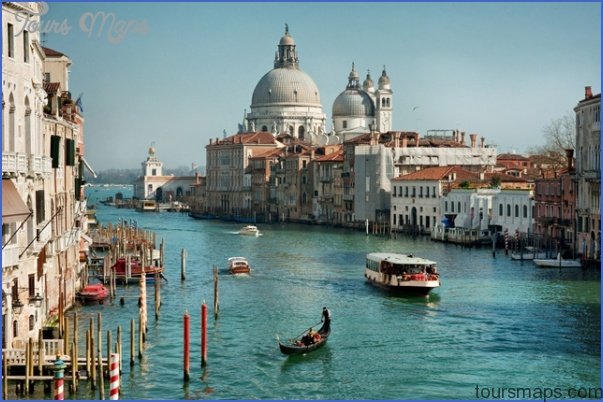GIARDINI PUBLICI AND SANT’ELENA. Those who long for trees and grass can stroll through the Public Gardens, installed by Napoleon, or bring a picnic lunch to the shady lawns of Sant’Elena. (Vaporetto: Giardini or S. Elena. Free.)
JEWISH GHETTO. In 1516 the doge forced Venice’s Jewish population into the old cannon-foundry area, creating the first Jewish ghetto in Europe; the word ghetto is the Venetian word for foundry. The oldest schola (synagogue), Schola Grande Tedesca (German Synagogue), shares a building with the Museo Ebraica di Venezia (Hebrew Museum of Venice) in the Campo del Ghetto Nuovo. (Cannaregio 2899B. Vaporetto: S. Marcuola. Hebrew Museum open June-Sept. Su-F 10am-7pm; 0ct.-May 10am-4:30pm. ‚3, students ‚2. Entrance to synagogues by guided tour only (40min.). English tours leave from the museum every hr. June-Sept. 10:30am-5:30pm; Oct.-May 10:30am- 3:30pm. Museum and tour ‚8, students ‚6.50.)
CA D’ORO AND GALLERIA GIORGIO FRANCHETTI. The most spectacular facade on the Canal Grande and the premiere example of Venetian Gothic, the Ca d’Oro, built between 1425 and 1440, now houses the Giorgio Franchetti collection. For the best view of the palace, take the traghetto across the canal to the Rialto Markets. (Vaporetto: Cb d’Oro. Open daily 9am-2pm. ‚3.50, students ‚2.50.)
The Foundation for the Churches of Venice sells mini-passes that provide access to all of Venice’s churches. A three-day pass (‚8, students ‚5) which includes S. Maria dei Miracoli, S. Maria Gloriosa dei Frari, S. Polo, Madonna dell’Orto, II Redentore, and S. Sebastiano, is available at all participating churches except S. Maria Gloriosa dei Frari. (For information call 041 275 0462.)
CHIESA DI SAN ZACCARIA (SAN MARCO). Dedicated to the father of John the Baptist and designed in the late 1400s by Coducci, among others, this Gothic-Renaissance church holds Bellini’s Virgin and Child Enthroned with Four Saints, one of the masterpieces of Venetian Renaissance painting. Its rich tones and meticulous shading are a testament to the Venetian attention to detail. A true find, this church is often overlooked by tourists. (Vaporetto: S. Zaccaria. Open daily lOam-noon and 4-6pm. Free.)
CHIESA DI SAN GIACOMO DI RIALTO (SAN POLO). Between the Ponte di Rialto and surrounding markets stands Venice’s first church, diminutively called San Giacometto. An ornate clock-face adorns its campanile. Across the piazza, a statue called il Gobbo (the hunchback) supports the steps. Once the podium from which officials made announcements, it was at the foot of this sculpture that convicted thieves, forced to run naked from P.S. Marco and lashed all the way by bystanders, could finally collapse. (Vaporetto: Rialto. Cross bridge and turn right. Open daily 10am-5pm. Free.)
BASILICA DI SANTA MARIA GL0RI0SA DEI FRARI (SAN POLO). Franciscans began construction on this enormous Gothic church, also known simply as I Frari, in 1340. Today it is a mausoleum of art, boasting two paintings by Titian as well as the Renaissance master himself, who is entombed within the cathedral’s cavernous terracotta walls. His HAssumption (1516-1518) on the high altar marks the height of the Venetian Renaissance. Like contemporary Roman and Florentine painters, Titian created balanced, harmonious compositions, enlivened with the traditional Venetian reverence for color and sensuality. Titian’s elaborate tomb, a triumphal arch, stands diagonally across from the Pesaro altar and directly across from the enormous pyramid in which the sculptor Canova (1757-1822) rests. (Vaporetto: S. Toma. Follow signs back to Campo dei Frari. Open M-Sa 9amSpm, Su l-6pm. ‚2.)
CHIESA DI SANTA MARIA DELLA SALUTE (DORSODURO). This church is central to the architecture of Venice: Its domes are visible from everywhere in the city. The theatrical Salute (Italian for health), poised at the tip of Dorsoduro, is a prime example of the Venetian Baroque style, which sought to draw spectators more fully into the architectural space. In 1631, the city commissioned Longhena to build the church for the Virgin, whom they believed would return the favor by ending the plague. These days, Venice celebrates the end of the plague on the third Sunday in November by building a wooden pontoon bridge across the Canal and lighting candles in the church. Next to the Salute stands the Dogana, the old customs house, where ships sailing into Venice were required to stop and pay appropriate duties. Upon leaving the Dogana, walk along the fondamenta to the tip of Dorsoduro, where a marvelous panorama of the city awaits. (Vaporetto: Salute. Open daily 9am-noon and 3-5:30pm. Free.)
CHIESA DI SAN SEBASTIANO (DORSODURO). The Renaissance painter Veronese took refuge in this 16th-century church when he fled Verona in 1555 after allegedly killing a man. By 1565 he had filled the church with an amazing cycle of paintings and frescoes. His breathtaking Stories of Queen Esther covers the ceiling, while the artist himself rests under the gravestone by the organ. Also displayed are works by Titian and Paris Bordone. (Vaporetto: S. Basilio. Continue straightahead. Open M-Sa 10am-5pm. ‚2.)
CHIESA DI SANTISSIMI GIOVANNI E PAOLO (CASTELLO). This terracotta structure, also called San Zanipolo, is primarily built in the Gothic style, but it has a Renaissance-era portal and an arch supported by columns of Greek marble. Inside, monumental salmon-colored brick walls and cream-colored stone ceilings enclose the tombs and monuments of former doges. Off the left transept is the Cappella del Rosario. After a fire destroyed the chapel in 1867, works by Veronese were brought in to replace the lost paintings. (Vaporetto: Fond. Nuove. Turn left, then right onto Fond, dei Mendicant. 041 523 59 13. Open M-Sa 7:30am-12:30pm and 3:30-7pm, Su 3-6pm. Free.)
CHIESA DI SANTA MARIA DEI MIRACOLI (CASTELLO). The Lombardi family designed this small Renaissance jewel in the late 1400s. It remains one of Venice’s prettiest churches, elegantly faced with polychrome marble and brimming inside with gold reliefs, sculpted figures, and lavish colors. (From S. S. Giovanni e Paolo, cross Ponte Rosse and continue straight. Open M-Sa 10am-5pm, Su l-5pm. ‚2.)
CHIESA DELLA MADONNA DELL’ORTO (CANNAREGGIO). Tintoretto painted some of his most moving works for his parish church, another Venetian Gothic example. Inside, lofty wood ceilings accommodate ten of his largest paintings.
Near the high altar hang his Last Judgment, a spatially intense mass of souls, and The Sacrifice of the Golden Calf. On the right apse is the brilliantly shaded Presentation of the Virgin at the Temple. A light switch for illuminating the works is at each of the far comers. (Vaporetto: Madonna dell’Orto. Open M-Sa 10am-5pm. ‚2.)
CHIESA SANTA MARIA ASSUNTA (CASTELLO). An excess of green-and-white marble and an extravagant ceiling await within this 18th-century church, which is covered by an equally lavish Baroque facade. Its gilded stucco work is unparalleled in Venice. Titian’s Martyrdom of Saint Lawrence hangs in the altar to the left at the entrance. (Vaporetto: Fond. Nuove. Open daily lOam-noon and 4 pm.)
Venice Travel Photo Gallery
Maybe You Like Them Too
- Explore Blavozy, France with this detailed map
- Explore Nevestino, Bulgaria with this Detailed Map
- Explore East Lindfield, Australia with this detailed map
- Explore Bonferraro, Italy with this detailed map
- Explore Pulau Sebang Malaysia with this Detailed Map

